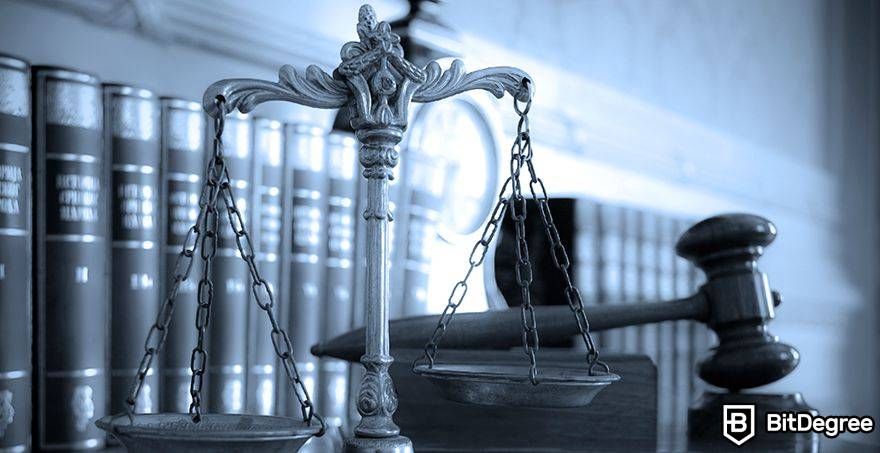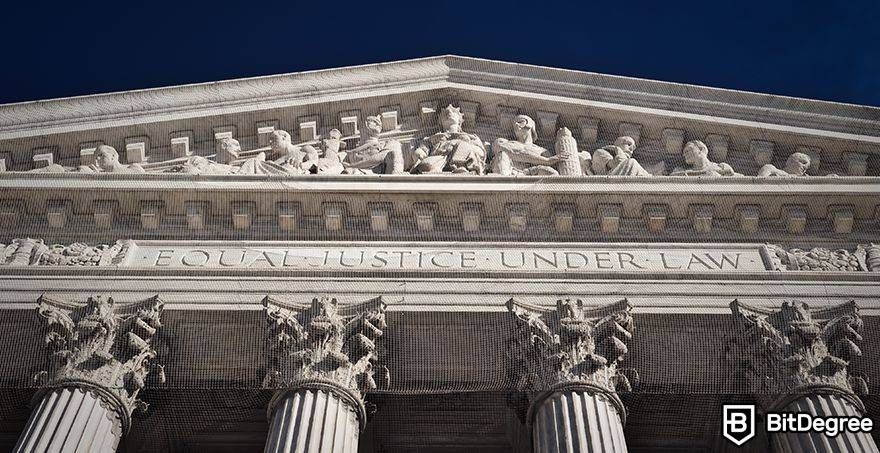Stop overpaying - start transferring money with Ogvio. Sign up, invite friends & grab Rewards now! 🎁
Understanding the Howey Test and Crypto Regulations
Understanding crypto regulations is a tough task. This is especially true for US citizens. While most countries are struggling to make clear and concise rules, America is notorious for having complicated guidelines and laws with regard to regulations. This is made worse due to the country’s ongoing debates about the nature of crypto.
While there is no doubt that these rules are in constant flux, the core concept to understand crypto regulations is currently the Howey Test. This is a legal principle that the US Securities and Exchange Commission (SEC) applies to every cryptocurrency to determine whether it is a security or not.
What is a Security?
In the US, a security is a financial instrument or asset that represents an ownership interest, a creditor relationship, or the right to acquire or dispose of this interest in a company or investment. It is sometimes referred to as an investment contract, meaning that these assets signify a relationship between the investor and the issuer of the asset itself.
The most common examples of a security are stocks and bonds. Stocks are a great way of highlighting what a security is, as stockholders typically have voting rights within the company they pertain to, meaning that there is a contractual relationship between the entity that holds the stock, and the issuer of the stock.

Did you know?
Subscribe - We publish new crypto explainer videos every week!
Copy Trading Guide for Beginners (ANIMATED EXAMPLES)


However, the SEC has been applying some of this logic to the crypto space, with the SEC chair, Gary Gensler, infamously stating that “everything other than Bitcoin” is a security. To understand what exactly he means, and how he came to this conclusion, we need to examine how The Howey Test works.
What is the Howey Test?
In 1946, the US Supreme Court heard the case of SEC v. W.J. Howey Co. The W.J. Howey Co. had begun selling tracts of land in Florida with orange trees on them to investors, who were promised a share of the profits from the sale of those oranges. The investors did not actively participate in the cultivation or sale of the oranges and were completely reliant on the efforts of Howey Co. to manage and sell the oranges.

The Securities and Exchange Commission (SEC) brought a lawsuit against Howey Co. alleging that the sale of the land and oranges constituted an investment contract and therefore, a security under federal securities laws. Howey Co. argued that the transaction was not a security, but rather, a sale of real estate. But the Supreme Court sided with the SEC.
The court then established a four-pronged test that could be used to determine whether something was a security under US law. This is known as The Howey Test, and it goes as follows:
To determine whether something is a security, there must be:
- An investment of money,
- In a common enterprise,
- With an expectation of profits,
- Derived solely from the efforts of others.
All of these four elements must be met for something to be considered a security. Or at least, this is currently how securities are determined, which has been the case for the last few decades. Let's delve into each one of these.
What is an Investment of Money?
Let’s begin with the first prong, which states that for something to be a security, there must be an investment of money. As you can probably guess, this is the easiest of the four prongs to understand. Essentially, an investor must give over a sum of money. The SEC and the Supreme Court take a relatively liberal stance with this prong, and so the investment does not have to be money, per se, but could also be things such as property, services, or other tangible goods.

This means that cryptocurrencies and NFTs could be considered an investment of money. You could even make an argument that the act of allocating your computer’s processor to become a miner could be counted, although that falls dangerously close to fringe cases and scenarios, and this idea is yet to be proven in the courts.
With this in mind, you could consider the first prong to be an investment of something that could be accounted for in financial terms. This might sound a little vague, but the aim of legal instruments such as the Howey Test is not to be 100% precise, but to balance precision with openness, as economics and finance are much less cut-and-dry than they are sometimes portrayed.
What is a Common Enterprise?
The next prong of the Howey Test asks whether the investment of money has been made in a common enterprise. This is essentially any project or mission which involves the shared efforts of several people. Usually, this manifests itself in the form of many investors pooling their money or resources together.

What is important about this is that the investors cannot see or access any returns on their lonesome. Rather, it requires the efforts of the enterprise itself, and those involved in it, to trigger, distribute, or contribute to those returns. A major element of this is that the investors do not have control themselves of whether they see profits.
It should be noted that having voting rights does not constitute enough control to void this prong, as the profits themselves still rely on other parties in the project or company, such as managers, advertisers, and (depending on the size of the project) C-suite executives. Voting rights surely affect the way a company functions, but not in the same way that internal members of a company do.
In the context of crypto, some coins and tokens have been considered a common enterprise, as people place their money into a coin, and then rely on the team and the developers to enact certain actions which contribute to the price.
What is an Expectation of Profits?
The third prong states that there must be an expectation of profits from those who invested money into the common enterprise. This is sometimes considered the most important of the four prongs by certain regulatory individuals and judges. The expectation of profits must be reasonable, although the amount to be expected is not particularly relevant. An expectation of any sort of profit is enough.

Additionally, even if you invest in something that seems ludicrous, which would typically be perceived as performing poorly and leading to losses in the market, this prong might still be satisfied. To understand why, it is important to note that this part of the test has a subjective element to it. This means that the individual investor’s thoughts and beliefs are taken into consideration. So, even if the general economic position would be that a certain investment would be problematic or yield negative results, if the individual believed it had a chance of success, then the third prong may still be satisfied.
Along with this, the courts and regulators will take marketing and advertising material into account, to see whether the common enterprise in question tried to position their project as a means of making profits. Or, at the very least, made it seem like there was a non-zero chance of financial gains through investing. This constitutes the more objective part of this prong, where the courts will question whether a reasonable person would view this marketing material as suggestive of a financial gain.
In the case of cryptocurrency, it will depend heavily on how the project at hand advertises their coin or token, and whether they present them as being ways of making money. Major cryptocurrencies like Bitcoin and Ethereum practically never engage in behavior like this, but some smaller coins and tokens do use suggestive media in this regard.
What are Efforts Derived Solely from Others?
The fourth prong states that the expectation of profits must occur due to third parties or other individuals outside of those who invest. The major aspect of this is that the investors are relying on somebody else to gain their profits, making them largely passive. The individuals they rely on are not typically part of the investor community. To help illustrate this, imagine that investors are entrusting their money to somebody else; to a different party.

For this prong to be satisfied, the investors must not be directly involved in the internal processes of the enterprise. This does not mean that they cannot vote on matters, but rather it means they do not actually work at the enterprise itself, and their efforts, other than the investment of the money itself, are not connected to the potentiality of profits.
This prong is pretty clear when it relates to closed enterprises, but what about open-source ones? This prong should stick out for any crypto enthusiast. Typically, crypto and blockchain projects are open for the community to engage in and make changes to. For instance, usually, a blockchain project has an open GitHub that people can get involved in. It is partially for this reason, that the SEC Director of Corporate Finance, William Hinman, has declared that Bitcoin and Ethereum are not securities, as they are decentralized in nature and so contribution is open to all.
This, however, does not mean that every cryptocurrency or blockchain project will fail the fourth prong. One way of arguing otherwise is with regard to the core structure of the project. If there is a specific collective of individuals who hold special roles in the project that are closed in some way, and which investors could not reasonably become a part of, then the fourth prong could still be met. In these circumstances, it could be argued that the investors’ efforts to make profits are connected to external forces that do not include them.
What is the SEC’s View?
It is not easy to determine what exactly the SEC’s position is on cryptocurrency. This is because they have different spokespeople and representatives. Not only this, but there is an obvious feeling that the institution is still grappling with cryptocurrency as a whole, and that they are still trying to understand the nature of the industry.

For this reason, we, as crypto users and enthusiasts, are left in a strange state of limbo where we are constantly unsure of what is happening in terms of regulations. To help understand the prevailing perspectives, let's try and follow the thoughts of Gary Gensler, who rests at the top of the SEC corporate and regulatory tree, and so his words are typically seen as gospel right now. However, there are two huge caveats. Firstly, he is known to flip on his own position at times. And secondly, the Supreme Court is able to side against Gensler if a case reaches it.
However, Gensler is not the only SEC official I have mentioned. William Hinman, Director of Corporate Finance, was discussed earlier as he ruled out Bitcoin and Ethereum as securities. How should we view his words? This is where things get complicated. Hinman is a serious voice who is worth listening to, but to some extent, he cannot overrule Gensler, as he is under him in the corporate tree. That does not mean his words are useless, but rather it shows just how complex it can be to decipher these types of regulations.
It is made tougher as well because Gensler has shared a similar viewpoint as Hinman when he argued that Bitcoin was not a security, alluding to a failure to satisfy the fourth prong of the Howey test. Yet, Gensler is cagey about applying the same notion to Ethereum, whereas Hinman is much more sure.
A possible reason for this could be that Ethereum, despite being decentralized, has a corporate structure with a set list of people who enact certain business positions. Gensler could be keeping this in mind and arguing that the actions of these people are connected solely to the profits that can be expected from investors. Is this the truth? It is hard to say. The logical answer feels like it would be a mix of sorts, where top decision-makers for Ethereum help largely to trigger the profits of investors, but not solely, as the project is still open-source. It is undeniable that those who make decisions at the highest level of Ethereum have a big impact, but it is simultaneously undeniable that the world performs a collective effort as well.
The fourth prong can sometimes be seen as satisfied if profits are largely connected to the actions of the enterprise, rather than solely. So, there is still a logical way for Ethereum to be seen as a security when framed like this. Is this a fair framing? That is definitely up for debate!
Is the Howey Test Infallible?
The Howey Test is viewed as the gold standard for figuring out whether something is a security or not. But it must be noted that this test may not always stay like this, and that sometimes, the courts and the regulators apply the prongs in slightly different ways. The best way to understand the Howey Test is as a blueprint or guideline for discovering securities. In truth, there is nothing that sanctifies it in law as being the definitive and complete rule.

It was created decades ago as a way of adding clarity to the matter, but if a situation occurs that causes the US legal system to rethink the nature of securities, then it could easily be rendered defunct and replaced with something else. This is the way that the law typically works. The law is a living instrument, designed to match the current makeup and structure of the country it relates to, and so if that changes, then the law is meant to change itself in lockstep. So, it would be reasonable to assume that one day a new test might replace the Howey Test and set a fresh precedent.
Not only this, but the SEC and the Supreme Court have the discretion to look at each case individually, giving different weights to different prongs. This is both comforting and frustrating, as it means that the law is not always rigid in its application of the test.
Conclusions
Hopefully, you now understand how the Howey Test works, how it applies to some cryptocurrencies, and what some of the current thinking is with regard to this industry. The Howey Test may one day be put to rest, but for the time being, this, and the words of the SEC, are the most important guiding principles to take into consideration when assessing crypto regulations in the US.
The real moment that this will get tested is when a crypto-specific case regarding securities goes to the Supreme Court. This will not only offer legitimate and sanctified legal opinions and interpretations from judges, but it will also force the SEC to take a unified position and reveal in full their thought processes. But until a case like this exists that touches on these points in-depth, the best thing we can do is simply wait and follow the current regulatory sentiments.




.jpg?tr=w-400)







![How to Transfer Money Without Fees? [Animated Tips 2025] How to Transfer Money Without Fees? [Animated Tips 2025]](https://assets.bitdegree.org/youtube/crypto-finally-explained/how-to-transfer-money-without-fees-animated-tips-2025.jpg?tr=w-400)









